We were first introduced to the Marsblade more than a year ago, way back in April of 2013. At that time, the Marsblade training tool was only available in Europe. We were interested in this product and wanted to see what it had to offer, but really had no way to get our hands on it. After some discussion with Per Mars, COO and inventor of Marsblade, we were told that we would be notified as soon as the product was available in the US.
In late May we were contacted by Marsblade once again, this time letting us know that the product was ready to start selling to the North American market. Marsblade was kind enough to ship us a pair to review, and we were glad to accept. We have been using the Marsblade for a couple training sessions now, and have compiled our thoughts in the review below.
About Marsblade
If you’re not familiar with the Marsblade, it is an off-ice training tool that allows you to simulate the movements of skating on ice. But since the founder of Marsblade (Per Mars) can do a much better job explaining it than me, I have decided to include his words below:
Off ice training has always been a big passion of mine and when I played I always search for a better way to train during the summer. Traditional inlines was never an option for me since I didn’t like the feel of them. One summer I started doing a lot of balance training and instantly noticed a huge improvement on my on ice performance. To make the training even better I realized that the imbalance should be placed in an inline chassis. This way I could challenge the stabilizing muscles in the exact right movement patterns.
The most obvious benefit is that the technology gives a more ice like feel but there are many more. It is designed to make it a bit harder than skating on ice to challenge the stabilizing muscles and force the skater to get deeper in the skating position and thereby improving their skating technique. At first, many players find it a bit hard, which they are supposed to since it’s only by challenging yourself you’ll improve. However, only after a while skating on them they have found the proper balance and improved their technique. With the traditional inlines you have a long stable contact surface making you able to “cheat”, and put your balance point wherever you like, without loosing your balance. This gives the skater bad habits, one of them is that players get used to lean forward a lot. When you then start ice skating you feel like you have very poor balance and that you fall forward. With Marsblade your weaknesses is exposed. As soon as you cheat and not use a proper skating technique you will notice this. That way your body gets constant feedback on when you do right and when you do wrong. So after skating on Marsblade you have learned to bend you knees and push off from the centre of the foot for a powerful stride. Instead of having a hard time going back to the ice after a summer of inline skating, many think that it’s easier to start ice skating again and that they have improved their skating stride and efficiency. Another positive effect is that players have experienced less groin problems than they usually have when they go back onto the ice.
Gallery
Design & Construction
The Marsblade chassis differentiates itself from a standard inline chassis by being dynamic. Your normal roller hockey chassis isn’t going to move underneath your feet, only the wheels will. With Marsblade, they’ve created Flow Motion Technology to allow for a natural and smooth movement of part of the frame. This will move depending on where your weight is being placed, with the goal of constantly challenging your balance and improving your every stride.
The Flow Motion Technology is based on a split chassis design, which uses a rounded upper chassis that rocks against a flat bottom one. When the weight shifts forward or backward, the chassis follows. According to Marsblade, this gives the skater both a longer stride and provides improved maneuverability. This combination is supposed to enable higher speed, quicker turns and a smoother stride. Additionally, the rocking motion of the frame can be adjusted or customized to suit the level of your skating, or simply to your preference.
When you purchase a Marsblade, you’re not only getting the frame itself, but you also get a set of 10 Labeda wheels. There are eight 76mm wheels, and an additional two 72mm wheels which you can put in the front two spots if that is your preference. Additionally, you will get a set of Abec 7 bearings. At first I was disappointed by this since I’m used to Swiss bearings. However, considering the fact that this is a training tool, it’s better to have a set of Abec 7 so you have to push harder to maintain top end speed.
Performance
I’m not going to shy away from the fact that I was not sold on the benefits of the Marsblade prior to using it. Having played both ice and roller hockey for many years, I wondered how it could possibly be better than a standard pair of inline skates for training. I did not believe that there could be any added benefit by having the Marsblade.
All of those negative thoughts went out the window once I laced up my skates and headed out for a training session. I was immediately challenged with my balance. As soon as I stood up, I could feel the movement of the chassis and felt very off balance. I nearly fell two or three times as I became accustomed to the movement of the frame. It was sort of embarrassing though to go from being a confident skater to instantly feeling like it was my first time on inline skates again.
The biggest adjustment period was brief, however. Once I got moving, I started to get the hang of the chassis and how it would rock with my stride. But then, as I started feeling the movement throughout every stride, I noticed more and more how these weren’t like your every day pair of inline skates. The addition of Flow Motion Technology appeared to increase my stride length versus a traditional pair of inline skates, and felt more like it would on ice.
I began skating hard on the Marsblade once I got used to the stride. I pushed myself pretty hard, but was not going in an all out sprint. I could definitely feel my legs begin to burn from skating, and knew I was getting a good workout in. I made it through a few phases of pushing myself and going back to a normal stride without fault. I kept thinking how wrong I was about this new frame. But then, before I could get too excited, I experienced a feeling that all roller hockey players are probably familiar with. You know when you’re skating hard, and all of a sudden you feel a wheel stop moving or catch as it tries to spin? Yes, that’s what I experienced on my front wheel as I was making a turn.
Before I knew it, the front wheel on my right skate shot off and began rolling down the street. I knew I had tightened everything sufficiently, so needless to say I was extremely disappointed when this happened. I spent about 10 minutes looking for the missing screw, determined it was a lost cause, then began heading back towards my home.
My biggest surprise during all of this was actually how easy it was to skate without a missing front wheel. I know I’ve done this before on a traditional pair of inline skates and just plain isn’t fun, but with the movement of the Marsblade chassis, I was able to keep my weight back and still somehow skate with only 3 wheels.
My faith had been restored. I began thinking once again how incredible the Marsblade was. Not only could it perform well with all of its wheels, but then remove a front wheel on one skate and it still performs well. Then it happened again. I got that same sticky feeling on the front wheel of my left skate, but this time stopped to see what was happening before the wheel could fall out. Unfortunately, one screw was already gone, so I had no choice left but to remove that wheel and proceed to skate home extremely disappointed. I managed to make it home without much of a hassle, but missing two front wheels doesn’t make it easy.
It was an extremely unfortunate and unpleasant thing to have happened. As a training tool, my expectation is that I can safely push myself real hard during a workout to get the most out of it. After having these issues during my first skate, I’ve been constantly worried that it might happen again, but with me wiping out as the result.
I’ve managed a few additional skates on the Marsblade, all with pleasant experiences (i.e. no wheels falling out), but the thought is still in the back of my mind. Now I’m forced to tighten the screws and retighten before and after every skate, just to make sure they are where they should be. This definitely is not the ideal situation, and isn’t something I worry about as much with a new pair of inline hockey skates.
Final Thoughts
The Marsblade is a good frame, it’s hard to argue that. The engineering involved and the results are cool, well designed, and they work. The way you skate on these frames mimics the way you skate on ice much better than a traditional inline frame. It definitely accomplishes the goal of being an solid off-ice training tool so you can make the most out of your summer workouts.
Unfortunately, I think a couple of extra steps need to be taken to make this product a larger success. The main point is that the screws need to come stock with Locktite on them. I suppose it could be considered my responsibility to buy and apply aftermarket, but when you’re getting a new pair of skates from manufacturer’s today, they come stock with Loctite around the threads of the screws.
Another great improvement would be to make the Marsblade frames lighter. A lot of manufacturers out there are doing their best now to eliminate unnecessary materials from their frames to make them lighter, while not losing any strength. I think if you’re just using this as a training tool, it’s fine the way it is. But if you’re competing and actually using them to play roller hockey throughout the summer, which I’m sure many people would, it needs to be as light as possible.
My final improvement would be to cut the cost. At a regular price of $279.99 (North America launch price is $179.99), you’re spending as much money as a brand new pair of skates. The downside is that the Marsblade do not come with a boot. For example, I could get a real solid pair of Alkali, Bauer, or Mission skates for only $299. Is it worth it to pay $20 more for a product that includes the boot? It very well could be. Buying the Marsblade unit itself means you still have to spend the extra money to get a pair of boots to mount them on. Likely they will be a higher end pair of boots as well so you can mount them on a solid outsole that can withstand the new frame.
Where to Buy?
If you’re interested in getting the most out of your off-season training with a set of Marsblade frames, you can head over to our friends at IceWarehouse.com to purchase a pair today. If you do buy today, you’ll score the Marsblade at the launch price of $179.99. However, the standard price looks to be $279.99 so you’ll want to get them during this promotion.
If you have used the Marsblade, go ahead and leave a comment below and let us know how your experience was! Did you have any of the troubles we had? Different issues? Or was your experience a good one all the way around. Let us know how you feel about the Marsblade!
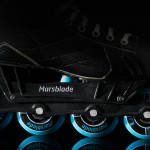
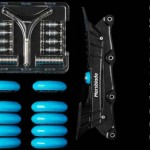
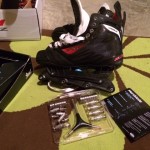
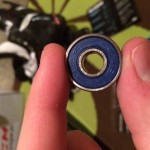
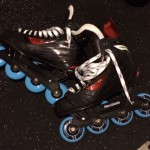
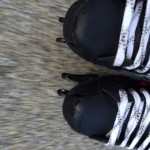

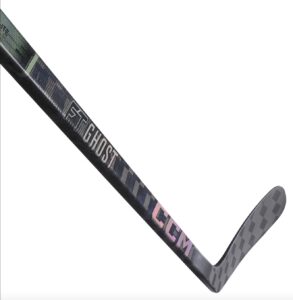

We at Marsblade would like to thank Matt for the review of our product. We of course think that it’s very unfortunate that he has had problems with the wheels falling of. Our experience however is that this is a very rare problem for our customers and that it shouldn’t occur if tightening the wheel axles properly. This being said, no one should have to experience this problem and we take this very seriously. We will take actions and be more clear with our customers to tighten the wheel axles hard as well as including locktite to the screws in future production.
//Per Mårs, Inventor
Can these be used outdoors? I know he said he was out skating but wanted to clarify. I wish they came with a boot also as my son is 12 and changes sizes often so he would have to use his old skate boots which will be tight.
wasn’t this already invented by bauer/nike years back??? They used to have a rocker chassis very similar to this where normally only 3 of the 4 wheels are touching the ground at one time depending if you were on your toe or heel. I loved them but they were quite heavy and the wheel wear was pretty uneven and rotating the wheels was difficult due to the uneven wear. I miss them though, I could turn on a dime while all the “hi lo” chassis guys would be left in the dust.
Have just finished my 5th outing (10 hrs) on these AMAZING blades. I’ve been using on a 2 basketball courts and have plenty of room to transition/ turn/ crossover without fear of cars, curbs, or other people. These blades give you such an ice skate feel its truly remarkable. The first hour is all for getting the feel, and after that you can do everything you can do on ice hockey skates except your hockey stop. Look forward to getting on them everyday when the weather permits. You can feel when your strides, turns, and crossovers are fundamentally sound because you feel like your skating on ice. Awesome! These things are a game changer. Be sure to have a nice smooth surface though. You can really get spoiled on that asphalt that has that sealer paint on it. If you enjoy skating on ice, get a pair of Marsblades. Love em . . .